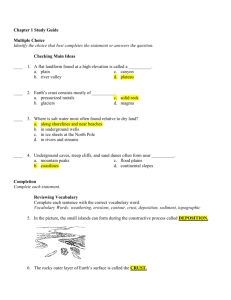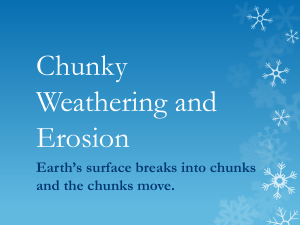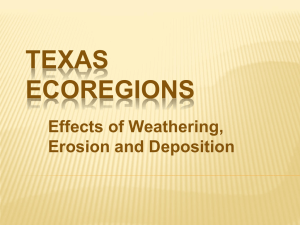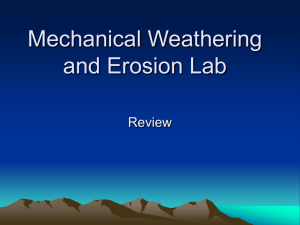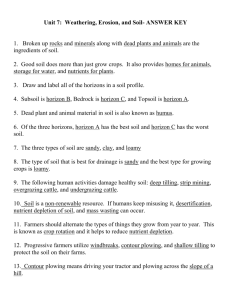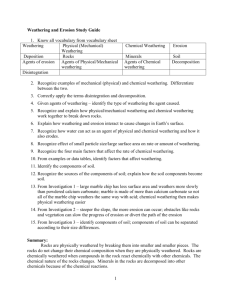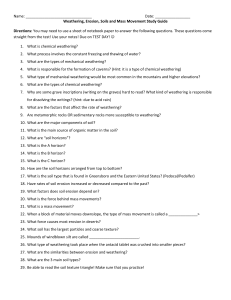File
advertisement
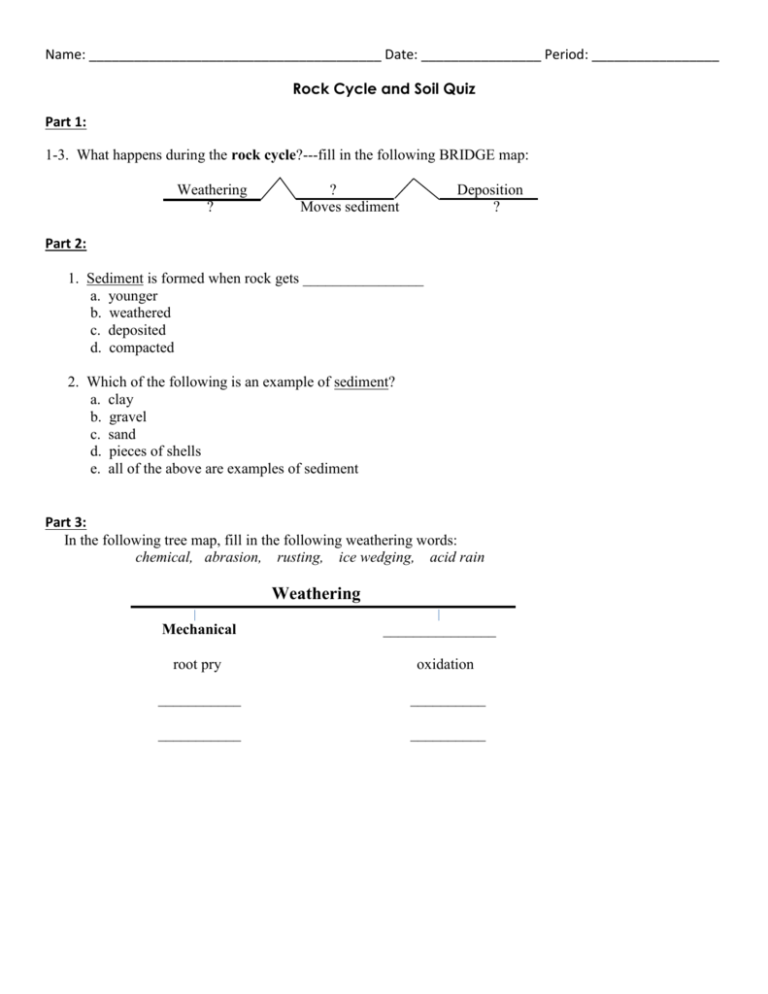
Name: _______________________________________ Date: ________________ Period: _________________ Rock Cycle and Soil Quiz Part 1: 1-3. What happens during the rock cycle?---fill in the following BRIDGE map: Weathering ? ? Moves sediment Deposition ? Part 2: 1. Sediment is formed when rock gets ________________ a. younger b. weathered c. deposited d. compacted 2. Which of the following is an example of sediment? a. clay b. gravel c. sand d. pieces of shells e. all of the above are examples of sediment Part 3: In the following tree map, fill in the following weathering words: chemical, abrasion, rusting, ice wedging, acid rain Weathering Mechanical _______________ root pry oxidation ___________ __________ ___________ __________ Part 4: 1. What type of weathering is shown in the picture to the right? (this picture was taken in the desert) a. Abrasion b. Ice Wedging c. Acid Rain d. Root Pry e. Gophers and Rabbits 2. What type of weathering is shown in the picture to the right? (hint: the orange color is important) a. Abrasion b. Ice Wedging c. Rusting/oxidation d. Gravity e. Root Pry 3. What type of weathering is shown in the picture to the right? (hint: notice the leaves on the tree) a. Abrasion b. Ice Wedging c. Rusting/oxidation d. Gravity e. Root Pry 4. Both pictures below are both showing ____________ weathering. a. mechanical b. chemical Part 5: 1-2. Fill in the brace map about what makes up soil: ____________________ Soil Composition _____________________ ______Air and water____ 3. Briefly, how does soil form? (which process?) a. erosion b. deposition c. weathering Part 6: 1. Considering that it takes thousands of year to make new soil, is soil a renewable or nonrenewable natural resource? Matching (soil conservation): _____ 2. planting different crops each year (ex: corn one year, beans the next) _____ 3. making steps on the side of a mountain to slow down water erosion Choices: a. b. c. d. Wind break Crop rotation Terracing Contour plowing e. No-till farming _____ 4. plant trees/bushes to slow down wind erosion >> Bonus: What was the main cause of the Dust Bowl of the 1930’s? a. lightning b. insects c. drought Part 7: 1. What is the name of the layer of soil just under the grass? (hint: also called the “A-horizon” and has a lot of humus)? a. subsoil b. bedrock c. topsoil 2. (true or false) The sediments in topsoil is MORE weathered than the sediments in subsoil. a. true b. false 3. Why is topsoil so important to farming and gardening? a. it contains a lot of organic material, which contains nutrients (food) for the plants b. it contains large pieces of gravel that helps hold plants in the ground c. topsoil is tasty in cereal bars d. topsoil is not important to farmers and gardeners 4. After digging deeper and deeper, you would eventually hit solid (unweathered) rock, called _______________. d. energy shortage Part 8: 1. Question: What force creates and moves these sand dunes? Answers: waves and ____________ 2. A delta at the end of a river is formed by a. chemical weathering b. deposition c. mechanical weathering d. landslide 3. a. b. c. d. How did this canyon in Arizona formed. (Which process?) river erosion deposition ice wedging root pry

